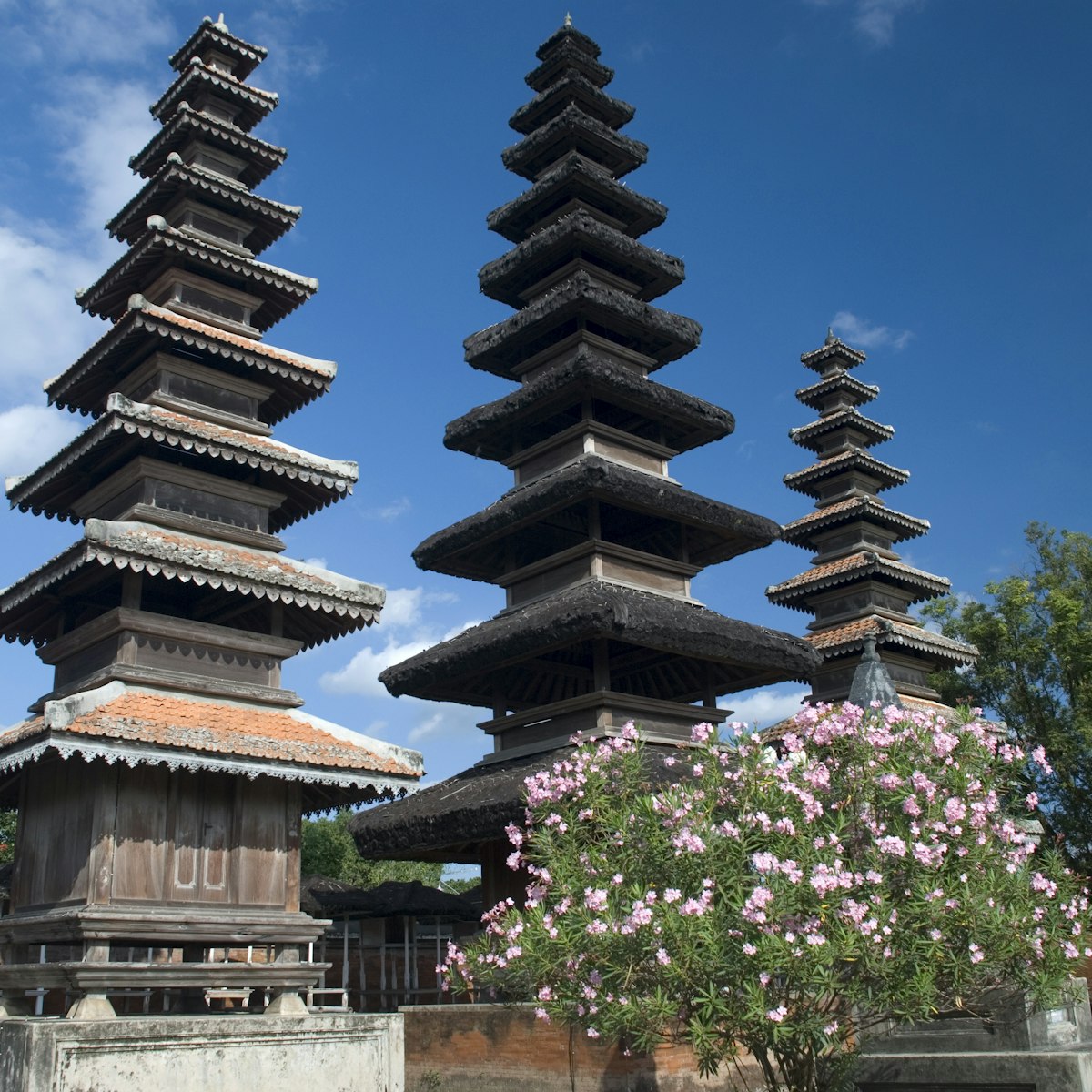Lording it over the northern half of Lombok, Gunung Rinjani (3726m) is Indonesia's second-tallest volcano. It's an astonishing peak, and sacred to Hindus and Sasaks who make pilgrimages to the summit and lake to leave offerings for the gods and spirits. To the Balinese, Rinjani is one of three sacred mountains, along with Bali's Agung and Java's Bromo. Sasaks ascend throughout the year around the full moon.
The mountain has climatic significance. Its peak attracts a steady stream of swirling rain clouds, while its ash emissions bring fertility to the island's rice fields and tobacco crops, feeding a tapestry of paddies, fields, and cashew and mango orchards.
Rinjani also attracts many trekkers who thrill to the otherworldly vistas. The volcano has become so popular that there were more than a thousand climbers on it during the first of the 2018 earthquakes, after which its slopes were evacuated. It remained closed for several months.
Inside Gunung Rinjani's immense caldera, sitting 600m below the rim, is the stunning, 6km-wide, turquoise crescent lake Danau Segara Anak (Child of the Sea). The Balinese toss gold and jewellery into the lake in a ceremony called pekelan, before they slog their way towards the sacred summit.
The mountain's newest cone, the minor peak of Gunung Baru (2351m), only emerged a couple of hundred years ago, its scarred, smouldering profile rising above the lake as an ominous reminder of the apocalyptic power of nature. This peak has been erupting fitfully for the last decade, periodically belching plumes of smoke and ash over the entire Rinjani caldera. Also in the crater are natural hot springs known as Aiq Kalak. Locals suffering from skin diseases trek here with a satchel of medicinal herbs to bathe and scrub in the bubbling mineral water.
The official website of Gunung Rinjani National Park has good maps, info and a useful section on reported scams by dodgy hiking operators.
Note that trekking independently up Gunung Rinjani is not allowed.


